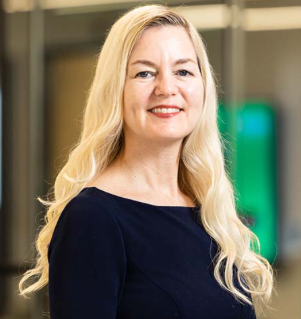In This Story
Incoming college students are increasingly concerned with social justice, conflict resolution, and sustainability. These are byproducts of being raised in an interconnected, interdisciplinary world, where they’ve been taught to consider the downstream consequences of their actions and decisions.

In response, the George Mason University College of Engineering and Computing (CEC) and Carter School for Peace and Conflict Resolution are now collaborating on a minor in peace engineering. The minor’s germination comes from numerous places but was pushed forward initially by Liza Wilson Durant, CEC’s associate provost for strategic initiatives and community engagement, and Alpaslan Özerdem, dean of the Carter School.
"I advised students in Mason’s Engineers for International Development chapter on developing engineered solutions to community problems in remote lands in Central America,” said Durant. “The engagement with community members and the work to understand the needs of a vast number of community stakeholders was as important as the final engineered solution. It occurred to me that we could bring that kind of understanding to the classroom for more engineering students through collaboration with the Carter School.”
Jane Walker, director of undergraduate student services for the Carter School, said the minor is ideal for students of both colleges. “The engineering students will better understand culture, people, and the complexity of their interactions, and Carter School students will better understand systems thinking and engineering design. Understanding design process helps with problem solving.”
Walker noted that their students have shown interest in adding to their expertise in conflict analysis with skills in project management and technical considerations, which they could get from classes that make up this minor.

According to the university website, the minor “brings together expertise in systems-level science, engineering principles, and conflict resolution practice to support conditions for peace. It prepares students to engage in projects with conflict sensitivity and to understand the engineering technologies and approaches impacting human systems.”
“When I pursued my civil engineering degree in Istanbul during the late 1980s, our curriculum offered limited engagement with socio-economic and cultural issues,” said Özerdem. “Although we had the opportunity to select a few electives that touched upon these topics, the primary focus remained on the technical and structural aspects of civil engineering.”
Rajesh Ganesan, an associate professor in the Systems Engineering and Operations Research Department, explained how systems engineering approaches are useful. “As we look at conflict on the whole from a global perspective, and think of all the huge factors that play a role in any crisis, we want to incorporate systems thinking into conflict analysis," he said. "It’s important for our students to have those systems thinking approaches.”

Özerdem said, “The disciplinary focus has evolved from a narrow technical lens to a more holistic approach that embraces flexibility and interdisciplinary learning. This shift has been a response to the growing recognition that the challenges we face today—ranging from climate change and urbanization to social equity and global peace—cannot be adequately addressed by any single discipline alone.”
Ganesan added that increasingly students are asking for courses related to things like climate change, global conflicts, energy sustainability, and more. He said, “These words were nonexistent previously. If you had asked me six or seven years ago, nobody spoke about these things, but now the students are asking for them, and we have other pushes, like from the Dean’s Advisory Board.” He said the advisory board, students, and alumni are the key sources of feedback on curriculum change.
For students looking to graduate on time, the minor only requires 15 more credits, of which eight are unique. A student may complete the minor by adding three classes and no more semesters.
Özerdem has a strong vision for the minor. “In the coming years, we hope to see it become a flagship program attracting a diverse and dynamic cohort of students from across the university,” he said. “Our goal is to build a robust and supportive learning environment where students from different disciplines can collaborate and learn from one another, fostering a culture of innovation and interdisciplinary excellence.”
